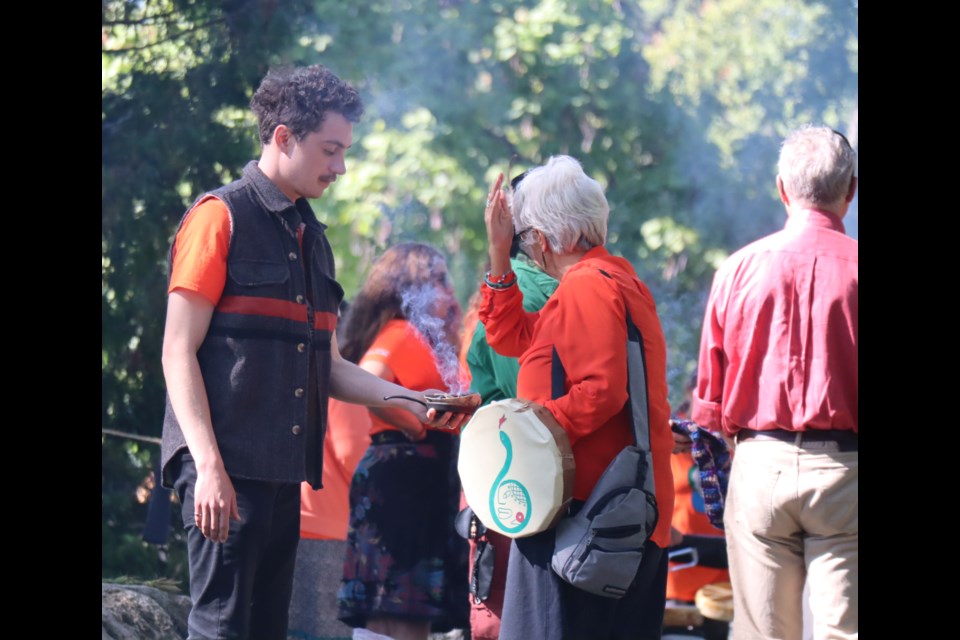A place to mourn, gather and reflect for Indigenous folks and allies at Royal City Park with respect to National Truth and Reconciliation Day, was underway on Friday.
“It was only last year that this became a national event. And it's finally getting a lot of attention that has been needed for so long,” said Will Taylor, who self-identifies as Anishinaabe.
At Royal City Park there was a sacred fire billowing with a circle outlined by poles, string and flags of different colours. The colours were red, black, white and yellow, with four boulders around the fire, the colours represented the four directions, north, east, south and west.
No photos of the fire were allowed to be taken. Food and drink was not allowed around the fire.
Taylor said it was tragic the graves were uncovered last year, far more than the Canadian government had estimated.
They said it was important if you have friends and family who are Indigenous to check in on them on National Truth and Reconciliation Day.
“It’s a funeral,” said Taylor. “It is a day of mourning, it's a day of grieving.”
When the news broke last year of the mass graves found of Indigenous children, it gave time for reflection for Kyla, an ally and attendee at the Royal City Park’s festivities.
“I often revisit the documents. Truth and reconciliation documents and UNDRIP and I've looked at them and think what is it I can do,” said Kelly, another attendee. “Most of the time I feel a little still, like I don't quite know what to do.”
“I think the listening and learning, building relationships with Indigenous friends and just keep talking to them and having tea,” said Kelly.
Both Kyla and Kelly did not want their last names used because they think the story should be focusing on Indigenous people and their stories.
“Especially growing up as a kid in public schools and this was not covered,” said Kyla.
“Keeping it as a priority and while we might not have all the solutions, they want to keep pressure on governments to move forward with those actions,” she said.
“In the public school system, where I was, residential schools were taught to us as if they had happened years ago. The last one closed in 1996 and it was taught to us as if it was the 1800s or when Canada first came into constitution, and that was not true,” said Taylor.
“I can't speak on the education system today, but I would hope that it's now teaching it as something that didn't happen too long ago,” they said.
Bruce Weaver, fire keeper at Friday’s sacred fire said it was too early to tell if Canada has learned and reflected in the last year.
“What I saw the first part of today's gathering for allies, the mood was different, but it's still a teaching time. Whereas we're transitioning now to a time of healing space, a prayerful space,” said Weaver.
“For us right now, it's moving into a space where we can grieve the past and maybe re-energize ourselves for the stuff that's ahead of us,” he said.
